|

|
|
Zabriskie Point (1970)
Rod Taylor plays Lee Allen, a real estate tycoon who runs a huge land
development company called Sunny Dunes.
This is a foreign film despite its California setting. Italian director
Michelangelo Antonioni -- who uses the screen as an artist's canvas -- created
a movie that's visually stunning but narratively weak. For Antonioni,
that's the point. It's an ambitious essay about alienation, commercialization
and radicalization in America.
The movie was released in March 1970 after going through five writers
and nearly two years in production. It was 58-year-old Antonioni's first
big flop and a crippling blow to his artistic reputation. But viewed today,
free of the baggage that haunted the film at its release, "Zabriskie Point" can be
seen as a fascinating work of art and cultural commentary.
The story follows a young man (Mark Frechette) who gets caught up in
a riot that results in a policeman getting shot. Mark runs, steals a plane and flies
out over the desert where a beautiful young woman is driving her boss' car
to his desert retreat.
The young woman is Daria (Daria Halprin), the real estate tycoon's secretary
and, possibly, lover. He is so taken with her that he leaves the bargaining
table in the middle of a $40 million deal just to speak casually with her on
the phone.
The real star of the movie is the desolate landscape of Death Valley
and the vista from Zabriskie Point, the lookout that gives the movie its
name and where Daria and Mark engage in a hallucinatory sex scene.
The movie climaxes with a spectacular explosion of the tycoon's opulent
desert retreat. The production constructed the cliff-side mansion just to blow
it up.
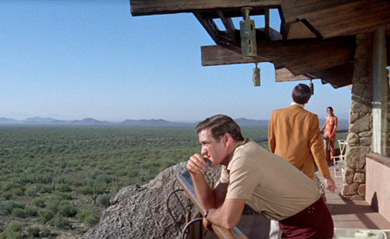
An article from the September 1992 issue of Film Comment magazine, notes
this about the final scene and Rod's role:
The house is the site of a secret meeting between Rod
Taylor and some other cynical real-estate developers. Daria is to meet
him there -- whether for work or an assignation is something Antonioni
never makes clear.
Daria is to start driving away from the house, then stop
her car, get out and, in rage and grief, "wish" for it to explode.
It was probably the most expensive act of imaginative violence ever filmed.
In an interview in Cinema X magazine,
Rod said he admired Antonioni's work but didn't think he was the right type of
actor for the director's style. But the director disagreed.
"He kinda
wooed me over three lunches," Rod said. "He convinced me. Never had a script,
just said: 'Rod, we just talk together. We do things together. We do script
together. And we don't tell anyone what we do.' So I said: 'OK, you're the ...
genius; let's see.'"
Rod wound up admiring the director and wanted to work with him again. However,
Rod wasn't aware of all the controversy surrounding the film and the alleged
violations of the Mann Act, which forbids transportation of people across state
boundary lines for immoral purposes. "I wasn't scarpering around nude or
anything," Rod said. "I didn't know this was going on. Though I sure ... heard
about it later. Like everyone else."
The movie was produced under great secrecy. Pages of the script arrived daily,
and reels of film were shipped out. Rod said he was only shown the scenes he was
in. "I didn't see any of the other scenes, most of which was being shipped to
Rome as soon as he shot it. I don't think anyone saw it."
As for his own role vs. that of the young amateurs, Rod said: "I didn't let him
do anything in my scenes that I didn't believe was right. I played a good,
strong, clean-cut businessman and he didn't try to warp my character at all. But
(laugh), he sure had fun with the beatniks, I tell you."
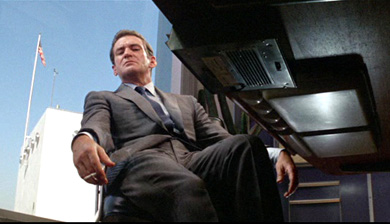 Other production
points:
-
The then-new Beneficial Plaza building at 3700 Wilshire Blvd. in Los
Angeles was used for Lee Allen's headquarters. According to a Nov. 24, 1968,
item in the Los Angeles Times, Antonioni chose the building because of its
facade and architecture based on the Italian renaissance. But because it
didn't look like Los Angeles, Antonioni added palm trees.
-
All the sequences relating to Rod Taylor and Sunny Dunes
Realty come from a Sam Shepard version of the script and spell out Antonioni's
original intentions to be contemptuous of the land exploiters.
-
Harrison Ford appears in an uncredited role as an airfield worker.
REVIEWS, THEN AND NOW
At the time of its release, "Zabriskie Point" drew scorn and poor
box office results. However, there were a few bright spots then, and
hindsight brightens things up even further.
-
In 1970,
Bernard Drew of Gannett News
Service called it "one of the most gorgeous pictures ever made."
He noted the movie's many flaws, such as its naiveté, its
fractured narrative, and its too-broad strokes in depicting cops
as fascists and Rod's character as an embodiment of capitalist
evil. But he softened upon a second viewing. "These things were
still there, but they no longer bothered me," Drew wrote. "I was
carried away and swept along by Antonioni's vision."
Another reviewer who "got it" in 1970 was
Dale Stevens of The Cincinnati Enquirer. "It is in the symbolic
moments that Antonioni really says what he has on his mind,"
Stevens wrote. He called the movie "meandering," but added,
"When you put the pieces together it makes a lot of sense. It is
the America of today about to be blown apart -- if only in the
minds of the young -- for its faults that blindly pit habit
against ideals."
Upon a re-release of the movie in 2014,
reviewer
Peter Bradshaw of The Guardian wrote: "Mocked and
critically patronised at the time, this was a counterculture
adventure with something in common with 'Easy Rider' and 'Bonnie
and Clyde.' It was a midwife to the desert reveries of David
Lynch, and provided an acid flashback to Hitchcock’s 'North by
Northwest.' Short of travelling by time machine, watching this
film is the best way to visit the Los Angeles of the late 1960s,
with all the streetscapes, billboards and brand names."
|
|
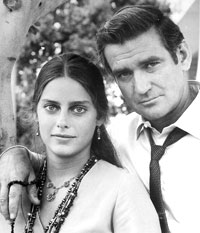
Click for Gallery
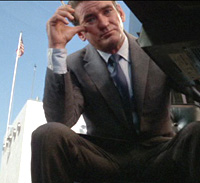
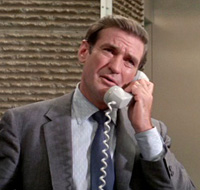
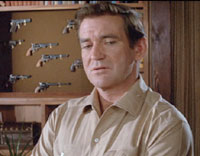
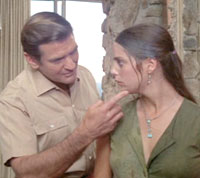
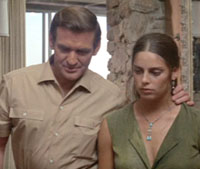
|